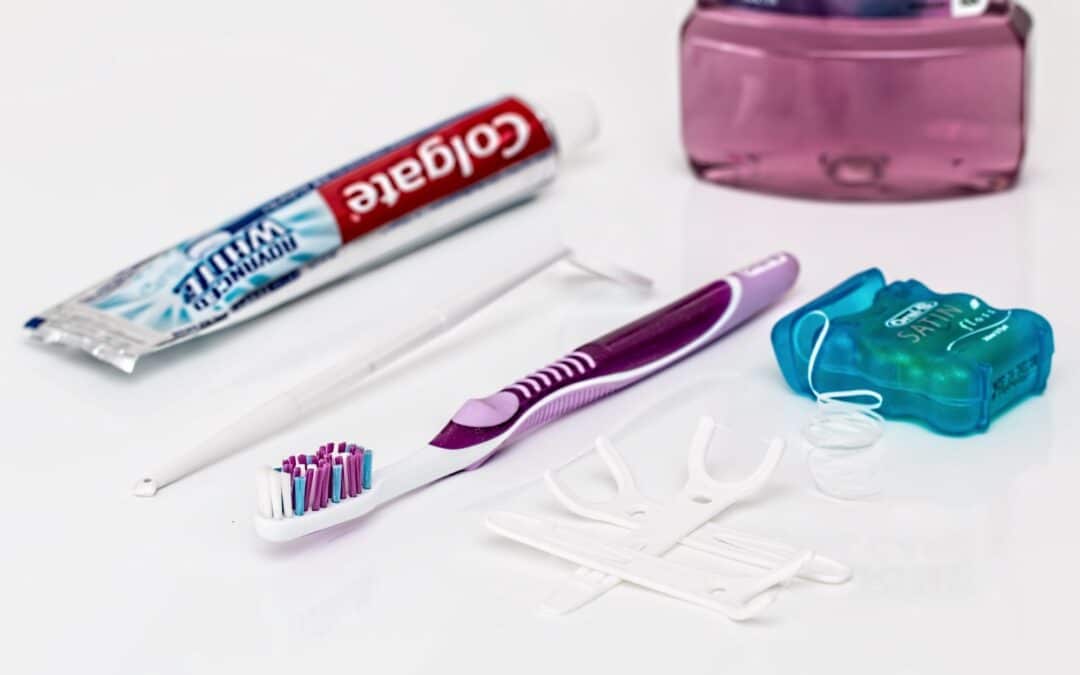Dental floss: our nylon nemesis, our mint-flavored frenemy. Unless you’re part of the 13.5 percent of Americans who floss daily, there’s a chance you may find flossing a bit intimidating.
Undoubtedly, a happy smile begins with a healthy smile. Your toothbrush certainly helps, but what about those nooks and crannies that your toothbrush can’t reach? Not to mention the intricate wires and brackets that come with dental braces.
Flossing with braces might seem challenging, but it doesn’t have to be complicated. Discover why flossing is imperative for optimal oral hygiene as we guide you step by step on how to floss with braces!
Importance of Flossing
More than just removing that stubborn piece of food from your teeth, flossing plays a crucial part in keeping sticky, poisonous biofilm generated by the bacteria in your mouth in check!
Your teeth are attached to your jawbone by a membrane that lies just below your gums. This membrane reacts to the pressure exerted on them by braces and regulates the position of your teeth. In order to successfully restore teeth to their optimal placements, a healthy environment is essential.
When tiny food particles become trapped between the teeth and gums, plaque accumulates and hardens over time to produce tartar. Practicing good dental hygiene with braces is the foundation of a healthy smile. When done correctly, flossing can help prevent dental disease, cavities, inflammation, and bad breath, to name a few.
How to Floss With Braces
Before brushing your teeth, it’s ideal that you get into those hard-to-reach places by flossing. Fortunately, there are different dental flossing tools to choose from for an easy and comfortable experience. Read more to discover your ideal flossing tool to use with braces with this handy guide:
Dental Floss
Waxed dental floss is recommended for braces as the wax coat makes it easier to slip in between teeth and crevices. Here are some simple tips for flossing with traditional dental floss:
1. Take 18 inches of dental floss
2. Slide one end of floss between your teeth and archwire
3. Pull dental floss through and wrap it around your index fingers
4. Floss at the base of each tooth in a gentle “C” motion
5. Rinse your mouth with water or mouthwash once finished
There’s also the option of dental tape, which is a gentler option for sensitive or bleeding gums. You can also try Oral-B Superfloss which has three components in one that include a regular floss that cleans between the teeth and gums, a stiff floss to clean under your braces, and a spongy floss to clean around wires and brackets.
Water Flosser
Water flossers use bursts of air and water to instantly remove plaque and debris between the teeth. Here are some easy steps to using a water flosser:
1. Fill the water reservoir with lukewarm water
2. Insert the flosser tip
3. Adjust the water pressure
4. Close your mouth around the flosser and lean over the sink
5. Spray along the inner and outer gumlines and all around the brace brackets
6. Repeat the process until you’ve flossed your entire mouth
Water picks are a great alternative for those who aren’t fans of traditional flossing. They’re also able to get into those difficult areas and effectively remove more plaque with barely any effort on your part!
Floss Threader
A floss threader is a rigid but flexible piece of plastic that resembles a needle and easily maneuvers through small spaces between the teeth, making it an effective tool in preventing cavities and gum disease. The simple tips are as follows:
1. Use 12 to 18 inches of dental floss
2. Insert one end inside the loop of the threader
3. Position the floss threader between your wire and teeth
4. Floss between the teeth and into the gum line
5. Repeat the process until you’re done
Floss threaders are disposable and can be purchased online or at any dental office. They also work with any floss thread and can be reused simply by rinsing them with warm water after each use.
Orthodontic Flosser
An orthodontic flosser is a small plastic tool with a handle, two narrow arms, and floss secured tightly in between. The simple directions are as follows:
1. Position the plastic handle between the teeth
2. Use a gentle “C” motion starting at the base of the tooth and into the gum line
3. Repeat the process for all teeth
This flossing tool is also ideal for removing plaque between the teeth, cleaning behind your brackets and archwires, and eliminating food and bacteria from under the gum line.
Choosing the Right Orthodontist
The first step on your path to the smile of your dreams is choosing the best expert for the job. Braces are a huge investment, so it’s critical to choose someone who understands how you might benefit from orthodontic treatment. Here are some key factors to consider before you decide:
- Check the orthodontist’s credentials to make sure they have the right experience, education, and expertise
- Get recommendations from people who have insight into an orthodontist’s professionalism, customized care, and overall satisfaction with patients
- Visit the establishment and pay attention to the environment, cleanliness, technology, and customer service
- Consider if the location is convenient and whether they can offer a payment plan that fits your budget
- Make an appointment with a potential orthodontist to make sure they can answer your questions and prioritize your specific needs
A positive and personalized experience begins the moment you enter the door where the journey is just as essential as the outcome. For the best orthodontist, look no further than the Emerald City!
A Healthy Smile
Whether you wear braces or not, maintaining good oral hygiene is essential to leading a healthy life. Flossing with braces may be challenging and time-consuming at times, but the results will be well worth the effort.
Our goal is to enlighten you on how to floss with braces and to reassure you that oral care with braces doesn’t have to be a chore! Take the first step to protecting your teeth by investing in a beautiful smile that will last a lifetime.

